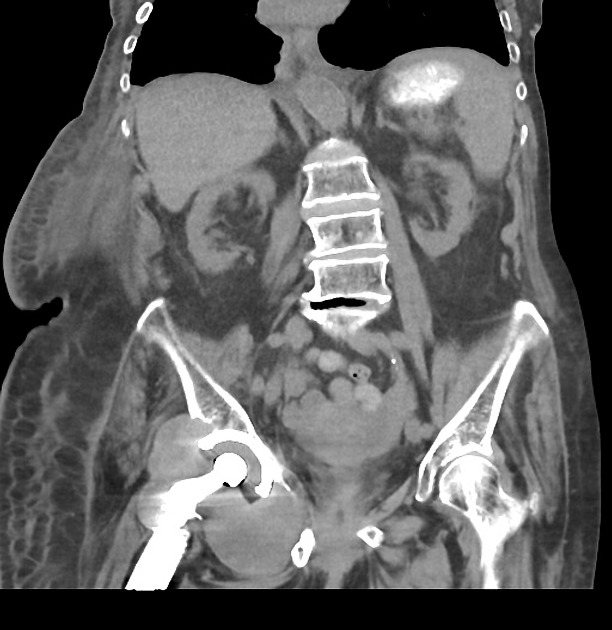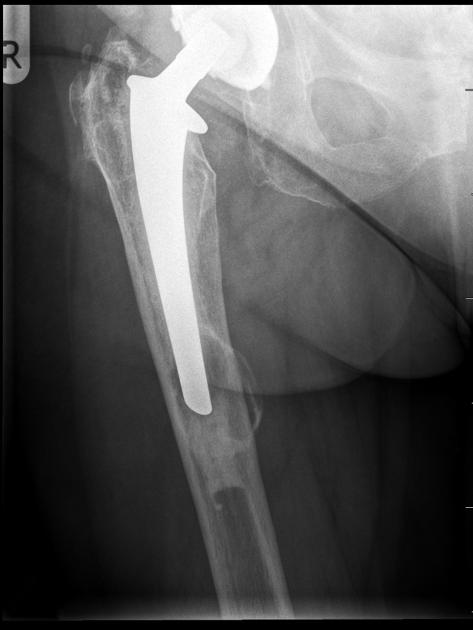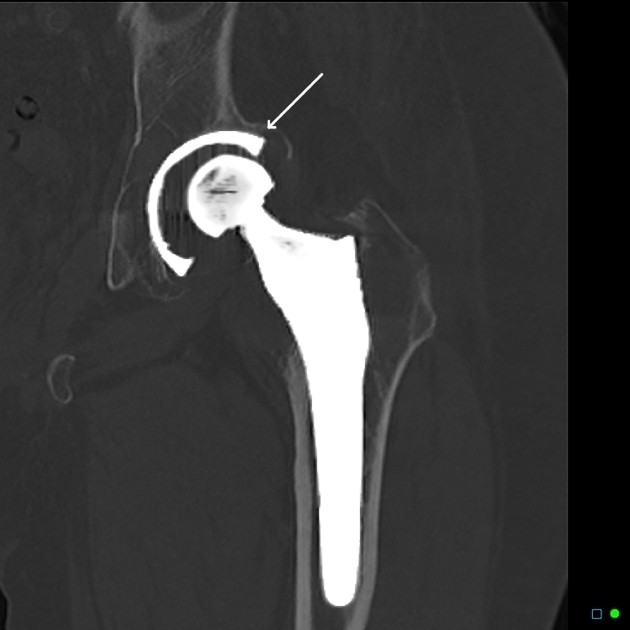aggressive granulomatosis post hip replacement



Aggressive granulomatosis post hip replacement (also known as particle disease) is a potential complication of a hip joint replacement.
Pathology
Aggressive granulomas consist of well organized connective tissue containing histiocytic-monocytic and fibroblastic reactive zones. They can be highly vascularized, and villous structures can be observed. On immunohistological evaluation, most of the cells in the aggressive granulomatous tissue tends to be multinucleated giant cells and C3bi-receptor and nonspecific esterase-positive monocyte-macrophages.
Radiographic features
Plain radiograph
There may be evidence of progressive lytic focal regions around the replacement. There is usually smooth endosteal scallopingand no sclerotic reaction.
MRI
The presence of a joint effusion due to reactive synovitis may be an early MR finding. This may occur before symptoms arise. There may also be capsular thickening and the presence of low signal intensity debris within the joint, though the normal fluid signal intensity of the effusion may also be seen.
Differential diagnosis
In certain occasions, it may be mistaken for primary or secondary neoplasia.
History and etymology
The process is thought to have been first recognized by Sir John Charnley, British orthopedic surgeon, in the 1960s .
Siehe auch:

 Assoziationen und Differentialdiagnosen zu aggressive granulomatosis post hip replacement:
Assoziationen und Differentialdiagnosen zu aggressive granulomatosis post hip replacement:

